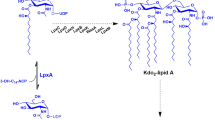Abstract
Halotolerant yeast, Pichia farinosa, is a valuable yeast strain in fermentation industry because it produces high yield of glycerol and xylitol, and can tolerate both contamination and high-density growth during fermentation. However, the lack of genetic manipulation tools makes it less popular as a gene engineering strain. Expression systems commonly used in other yeast systems, such as Saccharomyces cerevisiae and Pichia pastoris cannot be used in P. farinosa because it translates universal Leu codon CUG as Ser. Here we reported a modified expression vector and a transformation system with enhanced efficiency in P. farinosa. The results showed that cells of OD600 0.8–1.0 with DTT treatment can obtain high transformation efficiency. The optimized electroporation condition was 900 V, 25 μF, and 200 Ω. The DNA concentration did not influence the transformation. Our system provides the potential not only for applying P. farinosa as an industrial strain of gene engineering, but also for studying gene function in its native host.



Similar content being viewed by others
Reference
Bisping B, Baumann U, Rehm HJ (1990) Production of glycerol by immobilised Pichia farinosa. Appl Microbiol Biotechnol 32:380–386
Brzobohaty B, Kovac L (1986) Factors enhancing genetic transformation of intact yeast cells modify cell wall porosity. J Gen Microbiol 132:3089–3093
Burke D, Dawson D, Stearns T (2000) Methods in yeast Genetics. A Cold Spring Harbor Laboratory Course Manual. Cold Spring Harbor Laboratory Press, New York, pp 109–114
Chise S, Nao Y, Etsuko O, Toshiyuki K, Yutaka K (2003) Cloning and chromosomal mapping of URA3 genes of Pichia farnosa and P. sorbitophila encoding orotidine-5′-phosphate decarboxylase. Yeast 20:905–912
Fabienne F, Florence CL, Jean V, Thierry N (2004) Development of an integrative transformation system for the opportunistic pathogenic yeast Candida lusitaniae using URA3 as a selection marker. Yeast 21:95–106
Gerald K, Stephanus GK, Bernard AP (2001) Conservation and release of osmolytes by yeasts during hypo-osmotic stress. Arch Microbiol 177:29–35
Lenka P, Hana S (2003) Efficient transformation of the osmotolerant yeast Zygosaccharomyces rouxii by electroporation. J Microbio Methods 55:481–484
Hiroshi O, Toshiyuki S (1969) Microbial production of xylitol from glucose Appl Microbiol 18:1031–1035
Luis R, Francisco PC, Liliana B, Tanilo R, Julio MD (1998) Development of an integrative DNA transformation system for the yeast Candida utilis. FEMS Microbiol Lett 165:335–340
Nakamura Y, Gojobori T, Ikemura T (2000) Codon usage tabulated from the international DNA sequence databases: status for the year. Nucl Acids Res 28:292
Shye-Jye T, Kuang-Hui S, Guang-Huan S, Terng-Yuan C, Wan-Lin W, Guan-Chiun L (2003) A transformation system for the nonuniversal CUGSer codon usage species Candida rugosa. J Microbio Methods 52:231–238
Suzuki C, Kashiwagi T, Hirayama K (2002) Alternative CUG codon usage (Ser for Leu) in Pichia farinosa and the effect of a mutated killer gene in Saccharomyces cerevisiae. Protein Eng 15:251–255
Takeshi O, Tsutomu S, Miki M et al (1993) Non-universal decoding of the leucine codon CUG in several Candida species. Nucleic Acids Res 21:4039–4045
Tomita M, Iwatan S, Yamamoto S (1996) Alteration in cell wall chitin of Zygosaccharomyces rouxii. J Ferment. Technol 66:481–488
Toshikuni T, Takeshi S, Hiromichi O (2001) Microbial asymmetric reduction of α-hydroxyketones in the anti-prelog selectivity tetrahedron. Asymmetry 12:2543–2549
Vijaikishore P, Karanth NG (1986) Factors affecting glycerol production by Pichia farinosa under alkaline conditions. Appl Biochem Biotechnol 13:189–205
Vina WY, Jere AM, Brian PD, Thomas WJ (1994) High-efficiency transformation of Pichia stipitis based on its URA3 gene and a homologous autonomous replication sequence, ARS2. Appl Environ Microbiol 60:4245–4254
Waterham HR et al (1997) Isolation of the Pichia pastoris glyceraldehyde-3-phosphate dehydrogenase gene and regulation and use of its promoter. Gene 186:37–44
Author information
Authors and Affiliations
Corresponding author
Rights and permissions
About this article
Cite this article
Wang, X., LI, G., Deng, Y. et al. A site-directed integration system for the nonuniversal CUGSer codon usage species Pichia farinosa by electroporation. Arch Microbiol 184, 419–424 (2006). https://doi.org/10.1007/s00203-005-0062-8
Received:
Revised:
Accepted:
Published:
Issue Date:
DOI: https://doi.org/10.1007/s00203-005-0062-8




